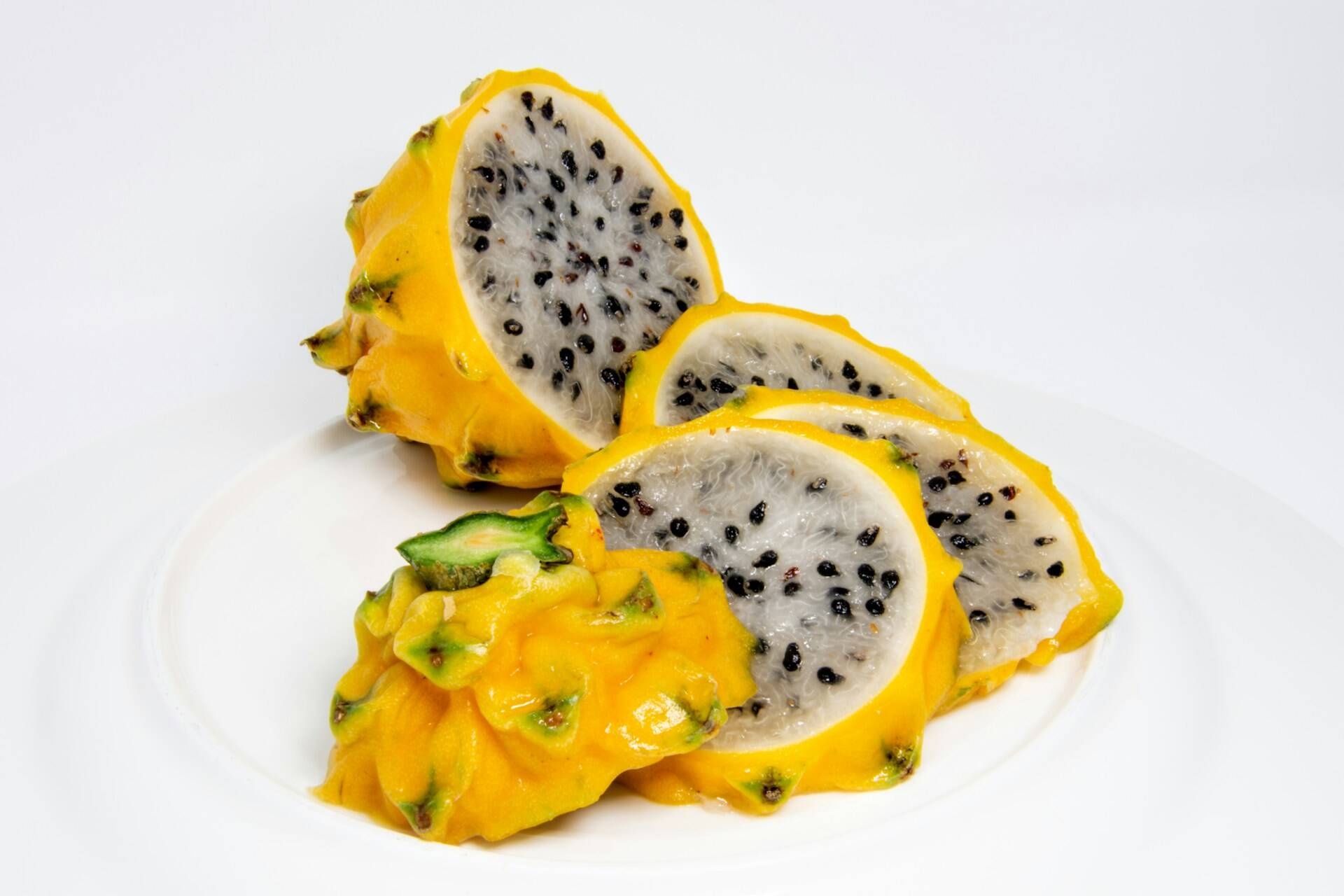Welcome to our yellow dragon fruit plant guide, Hylocereus Megalanthus. whether you’re a tropical fruit fanatic, a curious gardener or just looking to add to your cooking repertoire this in-depth guide has got you covered. let’s get started and explore its origins, growing, health benefits, uses and more.
Exploring the Yellow Dragon Fruit
Origin and background
The yellow dragon fruit plant comes from the tropical parts of South America, mainly from Colombia, Ecuador and Peru. From the cactus family, Hylocereus Megalanthus loves warm and humid weather with plenty of sun. It’s adapted to dry land with moist stems and night blooming habits to attract pollinators at night.
Physical Characteristics
It’s a beautiful fruit, oval in shape with bright yellow skin covered in green spines or scales, like a dragon’s hide. The spines are protective but also add to the fruit’s charm. Inside the pulp is yellow, juicy and seeded with tiny black eatable seeds. It tastes sweet with a hint of spice, like a pear and kiwi combined.
Growing Your Own Yellow Dragon Fruit Plant
Ideal Growing Conditions
To grow yellow dragon fruit you need to copy its tropical habitat. It loves well drained, rich soil with a pH of 6.1 to 6.7. It needs full sun, 6 to 8 hours a day and protection from strong winds. In cooler climates container gardening is a must as you can move the plants indoors during colder seasons.
Planting and Care Tips
Begin with a healthy cutting or seedling from a good nursery. When planting make sure the soil is well draining and add organic matter like fertilizers to the soil to make it fertile. Provide a strong support for the plant’s climbing stems as yellow dragon fruit is black moss and uses aerial roots to grip to structures. Water regularly especially during flowering and fruiting period and not waterlogged that can cause root to decay.
Nutritional Benefits and Culinary Delights
Nutritional Profile
It looks and tastes amazing but yellow dragon fruit is also packed with nutrients. It’s got antioxidants, vitamin C for immunity and collagen production, B vitamins, iron and calcium and healthy fats from the seeds. Add it to your diet.
Versatility in Cooking
In cooking uses yellow dragon fruit is very resourceful and pretty. Eat it fresh by cutting in half and pick out the pulp with a spoon. Sweet tart flavor is great for fruit salads, smoothies and juices. The color is stunning in desserts like ice cream, puddings and even cocktails. The seeds are crunchy and mild flavor and can be eaten with the pulp or used as a topping in salads and yoghurt bowls.
Practical Tips for Successful Cultivation
Pest and Disease Management,
Like all plants yellow dragon fruit is prone to pests like aphid ,scale and spider mites. Monitor and act proactively by introducing beneficial insects or organic pesticides. Prune infected or damaged parts and keep your garden clean to prevent disease.
Harvesting and Storage
Harvest when yellow and soft to the touch. The skin should be a bright uniform yellow. Use pruning shears to cut the fruit from the plant leaving a short stem attached. Store in a cool dry place or refrigerate for up to 1 week. Or freeze the pulp for long term storage and use in smoothies and desserts.
Conclusion
So there you have it, growing and eating yellow dragon fruit trees is a tropical gardening and culinary adventure. Whether you like the looks of it, the health benefits or just want to grow something different in your garden, Hylocereus Megalanthus is for you. Now you know how to grow it, what the benefits are and how to cook it, go enjoy growing, harvesting and eating with friends and family.
Additional Resources
For further exploration into yellow dragon fruit cultivation, recipes, and health benefits, consider visiting the following resources:

